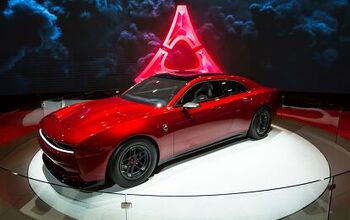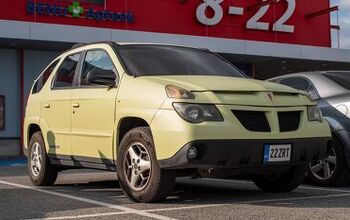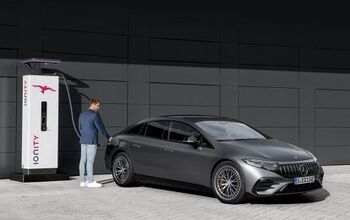Kia Niro Plug-in Looks to One-up the Toyota Prius Prime in One Key Way

Kia’s well-regarded Niro, the boxy, decent looking hybrid five-door that’s a cross between a crossover and a hatch (it doesn’t offer all-wheel drive), spawns a plug-in sibling for 2018.
Positioned as a mainstream offering for green yet thrifty families, both Niro and Niro Plug-in offer more than 100 cubic feet of passenger volume in an incognito body while delivering fuel economy approaching that of the Toyota Prius. In plug-in form, the Niro travels 26 miles before requiring the assistance of gasoline.
While the Niro Plug-in’s price tops that of a base Prius Prime, we’ve learned Kia has a strategy for scoring value-minded buyers.
Leasing. More and more Americans are deciding to have their vehicular relationships last no longer than three years, making attractive lease offers an increasingly popular way to lure buyers — and trump rivals.
According to Cars Direct, the base 2018 Niro Plug-in LX, which retails for $28,840 after delivery (an $845 increase over a Prius Prime), is a cheaper lease proposition than its space age-styled competitor. Kia will offer a national lease of $259 a month for 36 months with $1,999 due at signing, which works out to $315 a month.
In the oh-so-green Los Angeles area, that offer undercuts the Prius by $10 a month and the Prius Prime by $90 a month. The Prius’ volume model, the Prius Two, retails for $3,260 less than the Niro Plug-in, but the Kia’s the cheaper lease. Financing is available for as low as 0.9 percent APR.
While the Prius name remains top of mind among hybrid vehicle buyers, Kia figures cost can work in its favor.
There’s actually more than just lease value hidden inside the Niro Plug-in. Regular Niro buyers, Cars Direct notes, might find the plug-in model a better buy than the basic hybrid. Features found in the base plug-in hybrid are only obtainable through an options package on the regular base hybrid, pushing the Niro’s price to just $2,900 less than the plug-in model, before factoring in the federal EV tax credit.
Since entering the U.S. market in January, the Niro hybrid chalked up 24,840 sales through the end of November. That makes it the sixth-best-selling hybrid vehicle in the country, with year-to-date volume just over one third of that of the standard Prius hatch.
[Image: Kia Motors]

More by Steph Willems
Latest Car Reviews
Read moreLatest Product Reviews
Read moreRecent Comments
- Theflyersfan The wheel and tire combo is tragic and the "M Stripe" has to go, but overall, this one is a keeper. Provided the mileage isn't 300,000 and the service records don't read like a horror novel, this could be one of the last (almost) unmodified E34s out there that isn't rotting in a barn. I can see this ad being taken down quickly due to someone taking the chance. Recently had some good finds here. Which means Monday, we'll see a 1999 Honda Civic with falling off body mods from Pep Boys, a rusted fart can, Honda Rot with bad paint, 400,000 miles, and a biohazard interior, all for the unrealistic price of $10,000.
- Theflyersfan Expect a press report about an expansion of VW's Mexican plant any day now. I'm all for worker's rights to get the best (and fair) wages and benefits possible, but didn't VW, and for that matter many of the Asian and European carmaker plants in the south, already have as good of, if not better wages already? This can drive a wedge in those plants and this might be a case of be careful what you wish for.
- Jkross22 When I think about products that I buy that are of the highest quality or are of great value, I have no idea if they are made as a whole or in parts by unionized employees. As a customer, that's really all I care about. When I think about services I receive from unionized and non-unionized employees, it varies from C- to F levels of service. Will unionizing make the cars better or worse?
- Namesakeone I think it's the age old conundrum: Every company (or industry) wants every other one to pay its workers well; well-paid workers make great customers. But nobody wants to pay their own workers well; that would eat into profits. So instead of what Henry Ford (the first) did over a century ago, we will have a lot of companies copying Nike in the 1980s: third-world employees (with a few highly-paid celebrity athlete endorsers) selling overpriced products to upper-middle-class Americans (with a few urban street youths willing to literally kill for that product), until there are no more upper-middle-class Americans left.
- ToolGuy I was challenged by Tim's incisive opinion, but thankfully Jeff's multiple vanilla truisms have set me straight. Or something. 😉


































Comments
Join the conversation
That added interior room could well be a selling point for the increased cost of the car. American families will opt for more utility in their car purchases over brand loyalty. Toyota builds a damn fine product, but Kia/Hyundai have gotten their act together and brought their quality up to nearly the same level so it comes down to practicality in this vehicle segment. If Toyota built a small minivan, or other such designed vehicle in the Prius lineup it would blow the doors off everyone else. As it is, the shape of the Prius is it's weakest selling point for practicality. The hatchback slope is such that carrying anything other than a few grocery bags is impractical. Add that to the range anxiety most Americans still have towards Electric vehicles, and you alienate customers to switch from Gasoline fuel vehicles to the cars of the future. Electric vehicles will become more mainstream as States like California outlaw Fossil fuel vehicles Whether we like it or not, alternative fueled vehicles are coming. Hydrogen cells, Electric, hybrids or both are in our future, and American drivers need to get ready for it. what we once took for granted isn't going to happen in the future, and our driving habits will have to change with the times.
"the boxy, decent looking hybrid five-door that’s a cross between a crossover and a hatch (it doesn’t offer all-wheel drive)" WTF does all this mean? What's a "crossover"? Is it a transgender car?? Does all of this make the Golf R a "crossover"? Hey, it has AWD!!! And it's tall!!! And it's 5 doors!!! C'mon, guys, let's take that R thingy four-wheelin' down in the holler!